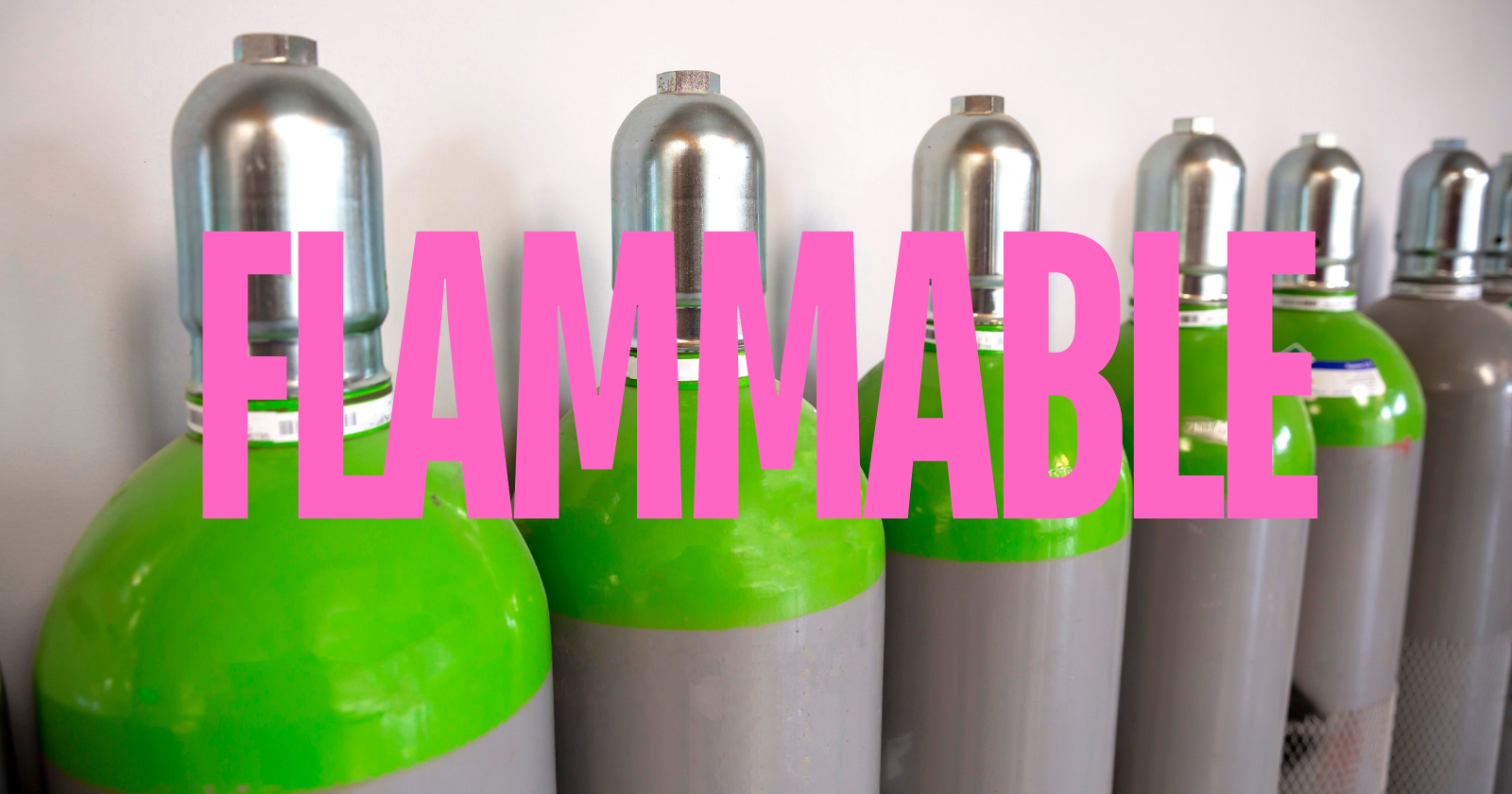Are Oxygen Canisters Flammable? It’s a common question, especially for those curious about fire safety and emergency situations. Oxygen itself is not flammable, but it can make other materials ignite more easily and burn hotter.
Understanding how oxygen canisters work and the risks involved is crucial for safe use.
Oxygen canisters are designed to provide a controlled supply of oxygen, often for medical purposes or in situations where breathable air is limited.
Although oxygen doesn’t burn, it supports combustion. This means that any fire in the presence of an oxygen source can become more intense.
Ignition sources such as sparks, open flames, or even high heat can pose significant risks when around oxygen canisters.
When using or storing oxygen canisters, following safety guidelines closely is vital.
Keeping canisters away from flammable materials and potential ignition sources can prevent dangerous accidents.
Being educated about these precautions can make all the difference in maintaining a safe environment.
Are Oxygen Canisters Flammable? The Key Takeaways
- Oxygen itself is not flammable but supports combustion.
- Oxygen canisters can make fires burn hotter and faster.
- Keep oxygen canisters away from flames and sparks.
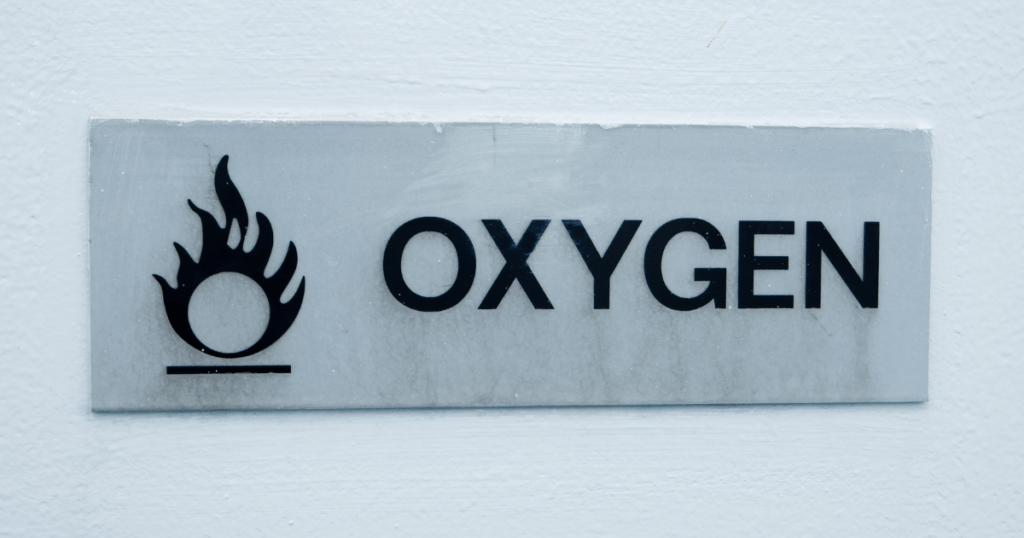
Composition and Properties of Oxygen Canisters
Oxygen canisters are designed to store and deliver oxygen safely. Their composition and properties are crucial for their function, considering the role of pure oxygen and the canisters’ physical nature.
Chemical Characteristics of Oxygen
Oxygen is an oxidizing agent. This means it can support combustion but does not burn itself. Pure oxygen in canisters is highly reactive. When combined with fuel in the air, it can cause rapid combustion.
Oxygen canisters often store gas under high pressure. This pressurized state allows for a larger amount of oxygen to be stored in a smaller space.
Due to its oxidizing nature, oxygen in tanks needs careful handling to prevent accidents.
Liquid oxygen is another form used in some canisters. It’s extremely cold and expands when it warms up, turning back into gas.
This liquid state allows for even higher storage capacity but requires special materials to handle low temperatures safely.
Physical Properties of Canisters
Oxygen canisters are made from durable materials to withstand high pressure. Common materials include steel and aluminum.
These materials ensure the tanks are strong enough to contain the pressurized gas.
Canisters are designed to prevent leaks and withstand impact. They often come with protective caps or guards to protect the valve.
The color of the canisters can indicate the type of gas inside; oxygen tanks are typically green or white.
These canisters are equipped with pressure relief valves. These valves help release pressure if it gets too high, preventing explosions.
Oxygen concentrators and canisters must be stored and used according to strict safety guidelines to prevent them from becoming a fire hazard in any environment.
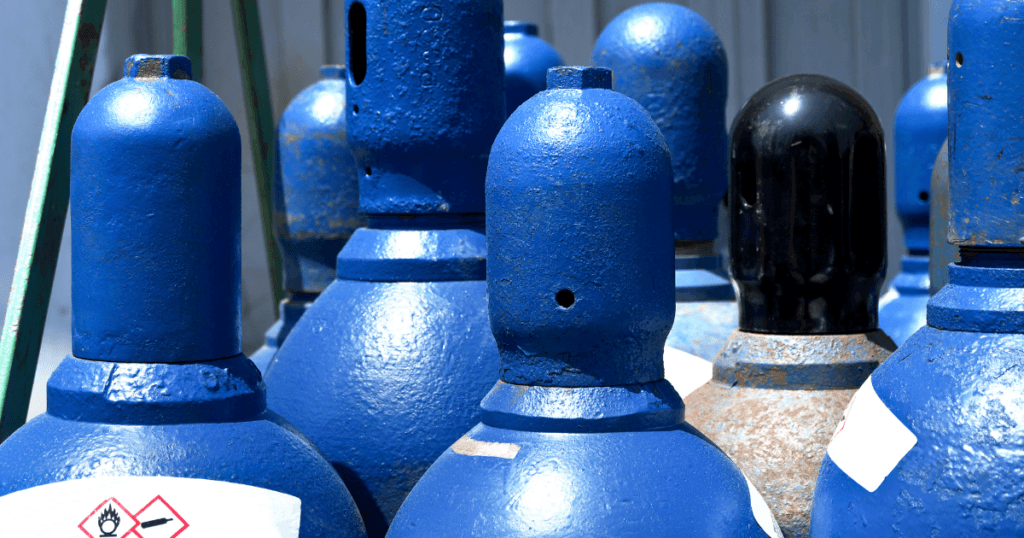
Oxygen Canister Usage and Associated Risks
Using oxygen canisters comes with important safety considerations. These devices are essential in many fields but pose fire hazards and require careful handling.
Medical and Industrial Applications
Oxygen canisters are often used in hospitals for oxygen therapy. Patients with breathing issues need pure oxygen gas to help them breathe better.
I have seen firefighters use Self-Contained Breathing Apparatus (SCBA) that rely on these canisters in rescue operations.
Labs use oxygen canisters in industrial settings to support combustion processes and other reactions.
They are common in welding and cutting metals due to the high temperatures achieved.
These essential applications highlight the wide usage of oxygen canisters, but handling them with care is crucial.
Hazards and Safe Handling Practices
Oxygen canisters can turn materials that are normally not flammable into serious fire hazards.
Something as simple as a spark can ignite nearby paper or hydrocarbons when in the presence of elevated oxygen levels.
Activities such as smoking should be avoided near oxygen supplies.
Open flames and heat sources must be kept away to prevent fires.
Even friction can be dangerous around canisters.
If an oxygen canister leaks or ruptures, it can lead to an explosion.
Always follow the manufacturer’s instructions for safe use and storage.
If you notice any damage to an oxygen canister, it’s important to get it fixed or replaced immediately.
Ventilation is important, too; a well-ventilated area reduces risks.
Precautions such as having a fire extinguisher nearby and knowing the exit points in an emergency are vital to safety.
Preventive Measures for Oxygen-Related Fires
To reduce fire risk from oxygen canisters, several steps are necessary.
Start by storing canisters in a cool, dry place.
Never allow pure oxygen to contact open flames or sources of ignition, such as candles or lighters.
It’s also important to check that canisters are secured and not easily knocked over or dropped.
Nitrogen can sometimes be used to dilute high-oxygen environments and reduce volatility.
Regularly inspecting canisters for leaks and monitoring concentration levels can help prevent spontaneous combustion.
Following these safety practices can help prevent serious injury or death due to fire hazards related to oxygen canisters.
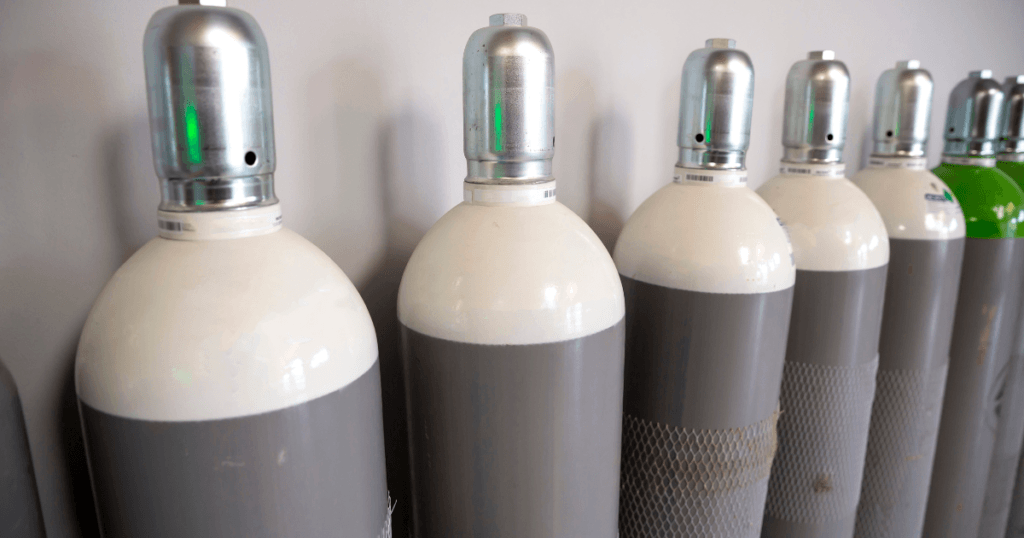
Emergency Response and Fire Suppression
Oxygen canisters can increase the intensity of a fire. Therefore, specific fire suppression methods and quick actions are crucial to preventing disaster.
Acting Quickly and Safely During Oxygen Canister Fires
If there’s a fire involving oxygen canisters, the first step is to act quickly.
Oxygen canisters can turn small fires into big ones, so don’t underestimate any spark or heat source.
Evacuate the area immediately if it is safe to do so. Keep away from smoking and open flames.
Alert emergency services without delay. Time is of the essence when dealing with such fires.
Use a fire extinguisher if you are trained and can do so safely. The best choices are CO2 or dry chemical extinguishers.
Never use water on oxygen-related fires, as it might make things worse.
Specific Roles of Firefighting Personnel and Equipment
Firefighters have clear roles when handling oxygen canister fires.
They use specialized equipment to manage heat and flames.
Oxygen tanks are highly flammable, so firefighters must approach cautiously. Masks and full protective gear are essential.
Firefighters often use CO2 extinguishers.
These are effective at smothering fires by removing oxygen from the fire triangle.
They also employ techniques to cool off the canisters, preventing explosions.
It’s critical to keep lighters and any open flame sources away.
I always make sure firefighters isolate the area and keep the public at a safe distance.
Fire safety measures like this prevent further hazards and control situations effectively.
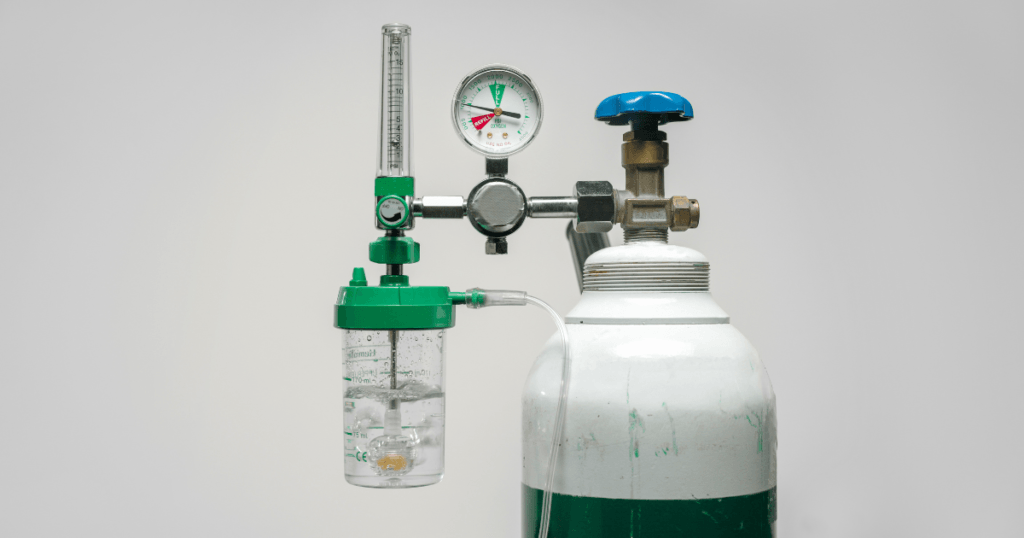
Wrapping Up
Oxygen canisters can be flammable because they contain pure oxygen. Pure oxygen supports combustion and can make fires burn faster and hotter.
To use them safely, follow these tips:
- Store them properly: Keep them away from heat and open flames.
- Use them correctly: Follow guidelines for use and handling.
- Check for leaks: Regularly inspect for leaks or damage.
Use oxygen canisters mindfully and keep safety in mind. If you have questions about safe practices, consult a professional.
Frequently Asked Questions
Oxygen canisters are critical for many medical treatments but also have certain safety concerns. Below, I answer common questions about oxygen canister safety.
Are oxygen tanks prone to exploding under certain conditions?
Oxygen tanks can explode if exposed to extreme pressures. Proper handling and storage are crucial.
Can an oxygen tank ignite if it is subjected to a high-heat environment?
Oxygen tanks can become hazardous in high-heat environments. It’s essential to keep them away from fire sources.
What are the fire risks associated with storing oxygen cylinders?
Storing oxygen cylinders improperly can increase fire risks. They should be kept in well-ventilated areas and away from flammable materials.
